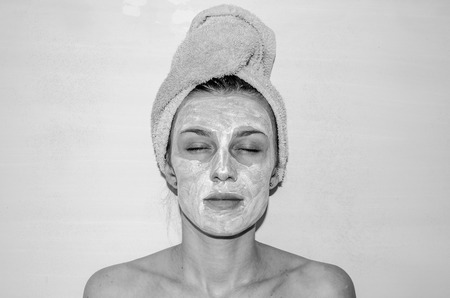1. Laser Skin Resurfacing Is Only for Older People
If you think laser skin resurfacing is just something your mom or dad would consider, think again. One of the most common myths floating around is that this treatment is strictly for people dealing with deep wrinkles or obvious age spots. But here’s the real deal: more and more younger Americans, even those in their early 20s and 30s, are booking appointments for laser resurfacing—and not because they’re worried about crow’s feet. The truth is, laser skin resurfacing isn’t just an “anti-aging” solution; it’s a game-changer for anyone looking to tackle stubborn acne scars, smooth out uneven skin tone, minimize enlarged pores, or even help with sun damage from all those weekends at the lake. From my own experience and talking with others at clinics across the States, I’ve seen guys and women alike use lasers to boost their confidence way before worrying about fine lines. So if you’re thinking this treatment isn’t for you just because you’re not “old enough,” trust me—it’s all about what you want to improve, not your birth year.
2. The Procedure Is Extremely Painful
Let’s be real—one of the top worries guys (and honestly, everyone) have about laser skin resurfacing is the pain factor. You hear “laser” and immediately picture something out of a sci-fi movie, right? But here’s the deal: most people are surprised at how manageable the discomfort actually is, especially with today’s tech and techniques.
What Do Patients Really Experience?
The vast majority of patients describe the sensation as more like a mild sunburn or tingling rather than outright pain. Sure, there might be some stinging or heat during the procedure, but it’s not torture-level stuff. In fact, after talking to friends who’ve gone through it and reading up on forums, I found that anxiety over pain usually overshadows what you actually feel in the chair.
How Clinics Keep You Comfortable
| Technique/Tool | How It Helps |
|---|---|
| Topical Numbing Creams | Applied before treatment; dulls sensation so you barely feel the laser. |
| Cooled Air Devices | Breeze of cold air blows on your skin, reducing heat and stinging. |
| Modern Laser Technology | Newer lasers work faster and are more precise, so less skin gets irritated. |
Bottom Line: Don’t Let Fear Hold You Back
If pain is your biggest concern, know this: clinics go out of their way to keep you comfortable, and almost everyone says it was way less intense than they expected. If you can handle a little discomfort for some serious results, you’ll probably walk away wondering why you waited so long.

3. You’ll Have a Long, Difficult Downtime
One of the most common myths about laser skin resurfacing in the U.S. is that you’ll be stuck at home for weeks, hiding from the world as your face heals. But let’s set the record straight—recovery isn’t nearly as brutal as most people think. The reality is, not all laser treatments are created equal. There’s a wide range of resurfacing options out there, from aggressive ablative lasers to gentler non-ablative and fractional technologies. Each comes with its own downtime and healing process.
For example, if you opt for a more aggressive procedure like a CO2 laser, yeah—you’re probably looking at about a week of redness and peeling. But these days, most folks in the States go for fractional or non-ablative lasers because they want results without putting life on hold. With these treatments, many patients are back at work or running errands in just a couple of days, sometimes even sooner.
The key takeaway? “Downtime” is no longer what it used to be. Clinics now offer customized plans tailored to your schedule and lifestyle—think weekend warrior treatments that let you look presentable by Monday morning. Plus, with new tech and better aftercare products available across America, recovery is smoother and less noticeable than ever before. So don’t buy into the hype that you’ll need weeks off or have to hide out like a hermit; plenty of real guys and gals bounce right back into their routines faster than expected.
4. Laser Resurfacing Works the Same for All Skin Types
One of the biggest misconceptions about laser skin resurfacing is that it delivers identical results regardless of your skin type or tone. In reality, America’s diverse population means there’s a wide range of skin sensitivities, pigment levels, and healing responses to consider. Laser technology interacts differently with various skin types—what works flawlessly for one person might lead to complications like hyperpigmentation or scarring in another. For example, individuals with lighter skin tones generally have a lower risk of pigmentation changes after treatment, while those with medium to dark skin tones need special protocols to minimize side effects. That’s why consulting a qualified provider who understands these nuances is crucial. Here’s a quick breakdown:
| Skin Type | Potential Risks | Best Practice |
|---|---|---|
| Fair/Light (Fitzpatrick I-II) | Redness, minor swelling | Most lasers are safe; minimal risk for pigment issues |
| Medium (Fitzpatrick III-IV) | Hyperpigmentation, prolonged redness | Use lower energy settings; pre-treat with topical agents |
| Dark (Fitzpatrick V-VI) | Hyperpigmentation, hypopigmentation, scarring | Choose specialized lasers (e.g., Nd:YAG); consult an expert familiar with ethnic skin |
The bottom line: There’s no one-size-fits-all approach here. If you want the best results—and want to avoid unwanted surprises—make sure your provider has experience treating patients who share your skin tone and understands how to tailor the procedure accordingly.
5. It’s a One-and-Done Solution
If there’s one thing I wish I’d known before my first laser skin resurfacing treatment, it’s that expecting a single session to be a magic fix is setting yourself up for disappointment. In reality, achieving the best results isn’t about walking out of the clinic looking instantly flawless—it’s about playing the long game, and understanding that maintenance is key.
Here in the U.S., we love quick fixes. We want to believe that one appointment can erase years of sun damage or acne scars overnight. But the truth is, most board-certified dermatologists will tell you that laser treatments are rarely “one-and-done.” Your skin is unique, and so is your treatment plan. For some guys, mild issues might improve dramatically after just one session, but more often than not, multiple treatments are recommended to get optimal results—especially if you’re dealing with deep wrinkles, significant discoloration, or scarring.
This doesn’t mean the process is never-ending or overwhelming; it just means being realistic about what modern lasers can do. Think of it like hitting the gym: you wouldn’t expect a six-pack after one workout. Consistency and commitment pay off. Maintenance sessions every few months (or annually, depending on your skin goals and lifestyle) can help lock in those gains.
The best part? Your provider will personalize your plan based on your skin type, goals, and how your skin responds to each treatment. No cookie-cutter schedules here—just an approach tailored to get you across the finish line safely and effectively.
If you’re considering laser resurfacing, go into it knowing that patience pays off. Trust the process and stay open to follow-up sessions; you’ll be way happier with your results in the long run.
6. At-Home Alternatives Are Just As Effective
If you’ve spent any time on TikTok or Instagram lately, you’ve probably seen ads for at-home laser skin devices popping up everywhere. The promise? Spa-level results from the comfort of your own bathroom—no appointments, no big bills, just a few minutes a week. But let’s get real about what these gadgets can (and can’t) do compared to professional laser skin resurfacing.
The Appeal of At-Home Devices
It’s easy to see why these devices are getting so much buzz in the US. Who doesn’t want a quick fix? They’re marketed as safe, affordable, and convenient for anyone looking to smooth out wrinkles or fade dark spots. And hey, I get it—the idea of handling things yourself is appealing, especially if you’re into tech or DIY solutions.
How At-Home Devices Actually Work
Most at-home devices use lower-energy light or laser technology than what you’d find in a dermatologist’s office. That’s intentional: keeping the power low makes them safer for untrained users, but it also means they’re nowhere near as effective. You might see some minor improvements in skin texture after weeks or months of consistent use, but don’t expect dramatic changes overnight—or even after a few months.
The Real Difference: Results and Safety
Professional laser treatments are done by licensed experts who tailor the procedure to your specific skin type and concerns. They use advanced equipment with higher energy levels that can reach deeper layers of your skin, delivering more noticeable and longer-lasting results. Plus, you get medical-grade safety protocols and post-care support—things you just won’t get from a device bought online.
Potential Risks of Going DIY
One thing a lot of guys overlook is the risk factor. With at-home devices, there’s always the chance of burns, hyperpigmentation, or uneven results if you don’t follow instructions exactly. Professionals know how to avoid these pitfalls and can adjust settings on the fly if your skin reacts unexpectedly.
The Bottom Line
If you’re serious about making real changes to your skin—whether it’s tackling acne scars, deep wrinkles, or sun damage—it’s worth investing in professional treatment. At-home options might be tempting for their price tag and ease of use, but they’re simply not in the same league as what you’ll get from an experienced pro with medical-grade lasers.


